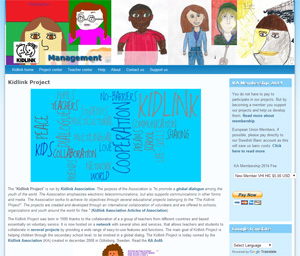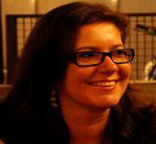My e-learning journey began when I joined Kidlink, a multicultural non-profit organization created by a Norwegian named Odd de Presno. His main idea was to establish a global network to promote collaboration and communication among youth from 10 to 15 years old. Within a few years of its creation, the Kidlink community grew connecting more than 190 countries.
It was an amazing experience as we explored not only the potential of the Internet but also the kids' creative learning. The organization has become an Association but still runs its projects all over the world. I believe this is a good example of the use of technology to build multicultural bridges and lessen the digital divide.
 The first step to register in Kidlink is to answer four questions: (1) Who am I?, (2) What do I want to be when I grow up?, (3) How do I want the world to be better when I grow up?, and (4) What can I do now to make this happen? The answers to these questions populate a database that consists of rich material for collaborative projects implemented throughout the network. The material can offer good support to curriculum integration such as in writing, to express personal thoughts and compare and contrast ideas, or in mathematics, to analyze and interpret data using diagrams and graphics.
The first step to register in Kidlink is to answer four questions: (1) Who am I?, (2) What do I want to be when I grow up?, (3) How do I want the world to be better when I grow up?, and (4) What can I do now to make this happen? The answers to these questions populate a database that consists of rich material for collaborative projects implemented throughout the network. The material can offer good support to curriculum integration such as in writing, to express personal thoughts and compare and contrast ideas, or in mathematics, to analyze and interpret data using diagrams and graphics.
The role of such a project in a globalized world is highlighted through a range of issues involving citizenship trends. By sharing a range of opinions and developing familiarity with different ideas, students overcome communication barriers and solve problems in a more cooperative manner. This way, as adults, they will take a more global and long-term perspective on issues, rather than acting to maximize local, short-term interests. In addition, Kidlink's participants live in countries from all over the world; in societies that have very different views on social, ethical, legal, religious, and moral issues. Kidlink encourages participants to value these differences and use them to gain insight into multiple views of a particular issue. In all activities, kids are free to honestly express their own views.
Most of the projects had the goal of supporting students as they share information, experiences, and resources with their peers who have similar aspirations, and effectively use their knowledge and information tools. Together, they investigate alternatives and propose solutions to better their future world. Some of the projects, such as the multicultural calendar and the multicultural recipe book, also help students strive to protect their traditions and roots, which in turn, helps them understand and respect themselves and their culture.
Online collaborative and multicultural projects such as those associated with Kidlink develop cross-curricular competencies that form the cornerstone for 21st century learning. These competencies, along with the 4Cs—Communication, Collaboration, Critical Thinking, and Creativity—are key to student success in college, career, and citizenship.
 Clarisse Olivieri de Lima is the Technology Coordinator of a private K12 school in Rio de Janeiro, Brazil.
Clarisse Olivieri de Lima is the Technology Coordinator of a private K12 school in Rio de Janeiro, Brazil. This article is part of a series from the International Reading Association Technology in Literacy Education Special Interest Group (TILE-SIG).